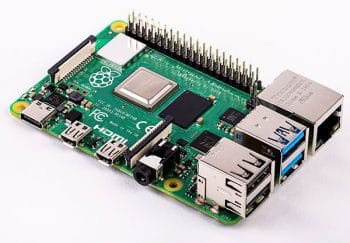Finally, the much awaited Raspberry Pi 4 is out now!
 After months of speculation, the Raspberry Pi Foundation finally released the all new Raspberry Pi 4 to the public! The Raspberry Pi 4 Model B comes surprisingly in 3 different “flavors”, with models that have 1GB, 2GB and 4GB of RAM, and prices varying from $35 on the 1GB model to $55 for the 4GB model.
After months of speculation, the Raspberry Pi Foundation finally released the all new Raspberry Pi 4 to the public! The Raspberry Pi 4 Model B comes surprisingly in 3 different “flavors”, with models that have 1GB, 2GB and 4GB of RAM, and prices varying from $35 on the 1GB model to $55 for the 4GB model.
The Raspberry Pi foundation claims this new version was designed to give you a “complete desktop experience”, however, everyone including your mother knows right now that the Pi is a very powerful little single board computer that can handle classic emulation really well! The previous model, the Raspberry Pi 3 B+, was capable of running PlayStation 1 games at full speed. Although The Pi up to this point has been able to run almost everything from the late 90’s and down, as far as emulation goes, it was not very successful at emulating systems like the Nintendo 64, SEGA Saturn and the Panasonic 3DO, all part of the same generation as the PlayStation 1, so the new Raspberry Pi 4 – specially the 4GB RAM version – is expected to be able to at least improve the emulation of such systems, compared to its older brother.
Another Pi Version, New Welcomed Features
But memory is not the only new feature of the Raspberry Pi tiny single board computer. The new “4” version comes with a new power connector. It is moving from USB micro-B to USB-C, and will support an extra 500mA of current, which will surely be welcomed when connecting extra USB devices to your little system. The bad news is that the previous power supplies will not work with this new version, so you’ll probably will have to spend $10 to $15 into a new power supply. We strongly recommend you to wait for the official version to come out to purchase one, since those are a lot more reliable than the generic ones we can find on places like Amazon and Ali Express.
The Raspberry Pi 4 B comes with dual type-D HDMI Micro ports instead of the single type-A full size HDMI port that has been used up to this point in previous Raspberry Pi iterations. Now you’ll be able to have dual 4k displays connected to your Pi, and although the desktop computing applications advantages are obvious, I am honestly curious to know how this can be used in emulation, specially in Arcade emulation, when you have some classic machines that used dual displays to have a wider playing area. It will be interesting to see if we will be able to use them this way, if not, the new desktop area is really welcomed.
Ethernet and USB also had their changes. The Gigabit Ethernet magjack has moved to the top right of the board, from the bottom right, greatly simplifying PCB routing. The 4-pin Power-over-Ethernet (PoE) connector remains in the same location, so Raspberry Pi 4 remains compatible with the PoE HAT.
The Ethernet controller on the main SoC is connected to an external Broadcom PHY over a dedicated RGMII link, providing full throughput. USB is provided via an external VLI controller, connected over a single PCI Express Gen 2 lane, and providing a total of 4Gbps of bandwidth, shared between the four ports.
All three connectors on the right-hand side of the board overhang the edge by an additional millimetre, with the aim of simplifying case design. In all other respects, the connector and mounting hole layout remains the same, ensuring compatibility with existing HATs and other accessories.
The bad news will all these changes is that previous cases designed for the Raspberry Pi 3 B+ do not fit the new Raspberry Pi 4. That includes the nifty Retro-flag NES, SNES, Super Famicom and Mega Drive/Genesis cases! Hopefully they will update their lineup and start offering these case – which have been favorites of mine for a while – for the Raspberry Pi 4.
Also, there is not a functional version of RetroPie/Emulation Station that is compatible with the Raspberry Pi 4 right now. We will have to wait for the developers to update their software to be able to run on this new version. The same goes for other front-end systems like recalbox. Your old microSD cards packed with cool games and ROMs will not work on this version yet, and it seems we will have to wait some time for an updated version of the system. Keep an eye on this space, as we will update the site with new information about RetroPie compatibility on the Raspberry Pi 4.
Raspberry Pi 4 Model B Basic Specs:
– A 1.5GHz quad-core 64-bit ARM Cortex-A72 CPU (~3× performance)
– 1GB, 2GB, or 4GB of LPDDR4 SDRAM
– Full-throughput Gigabit Ethernet
– Dual-band 802.11ac wireless networking
– Bluetooth 5.0
– Two USB 3.0 and two USB 2.0 ports
– Dual monitor support, at resolutions up to 4K
– VideoCore VI graphics, supporting OpenGL ES 3.x
– 4Kp60 hardware decode of HEVC video
– Complete compatibility with earlier Raspberry Pi products
If you need more information, don’t forget to check the official Raspberry Pi Blog.
Tags: Raspberry Pi
